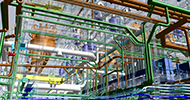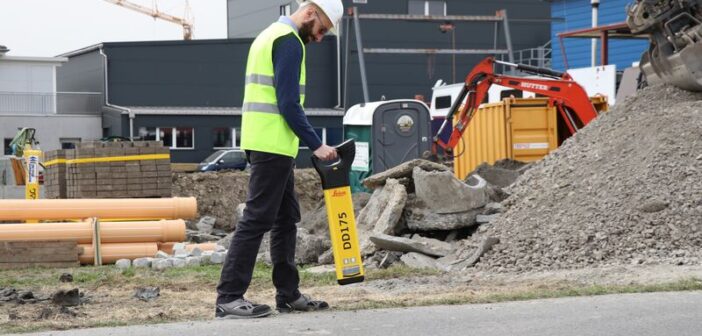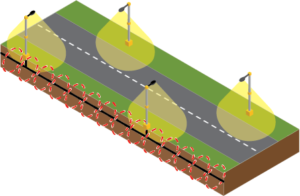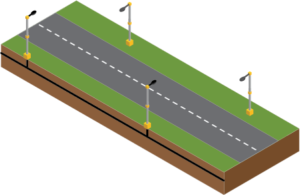Global expansion necessitates the expansion of existing and the development of new utility networks, which inevitably requires companies to undertake excavations to verify utility positions. Any operation to break ground will inevitably bring site operatives in the proximity of live underground utilities and services, the most common being water, gas, power, telecommunications and increasingly fibre networks. As a result, consideration should always be given to knowing the exact location of all buried utilities before and during the excavation process.
Damage to utilities through excavation work creates disruption, not only for the operating network but for the excavating contractor, the end-user and stakeholders as well. The resulting repair costs, loss of service, project delays and bad publicity will impact all parties involved.
Over half of all utility strikes occur to electrical cables, the majority attributed to mini diggers or excavators, airpowered tools and hand tools. A trend that shows a dangerous combination providing the highest risk to all operatives involved in breaking ground.
To safeguard against utility strikes, a cable locator is used for detecting the presence and proximity of buried utilities.
When an alternating current (AC) travels along a cable, an electromagnetic field is generated. The alternating current not only creates a magnetic field but also the oscillation of the current between positive and negative creates a frequency known as Hertz (Hz). The electromagnetic field generated by an AC current can be detected by a cable locator, such as the Leica DD100 Series.
There are two main detection principles:
- Passive location – Used to locate an electromagnetic field already present on a utility
- Active location – Adds a specific signal using a signal transmitter onto a located utility
Passive Location
Some detectable signals may already be present on a buried utility, either through signals radiating from a powercable or the reradiation of very low-frequency radio signals from radio transmitters, which can ‘attach’ themselves to conductive utilities.
Principles behind Power Mode
When an AC current travels along the utility it generates an electromagnetic signal. Using a cable locator (Leica DD100 Series), a surveyor can detect the buried cables’ position by searching for the electromagnetic field.
Locating electrical cables using a cable locator on its own will only allow the operator to detect utilities with a live current, like a street light cable during the night. However, when lights are turned off, no current flows and the buried electrical cable is not detectable using a cable locator.
- Utilities with flowing current
- Utilities with no flowing current
Principles of Radio Mode
Low frequency long wave radio signals transmitted from a radio mast can pass into the ground, inducing a signal onto metallic utilities. The utilities re-emit these signals and they can be located and traced using a cable locator in RADIO mode.
Principles behind Auto Mode
Leica DD100 Series feature Auto mode, combining the benefit of simultaneous detection in Power and Radio modes. Auto mode helps confirm the presence of utilities on first site visits.
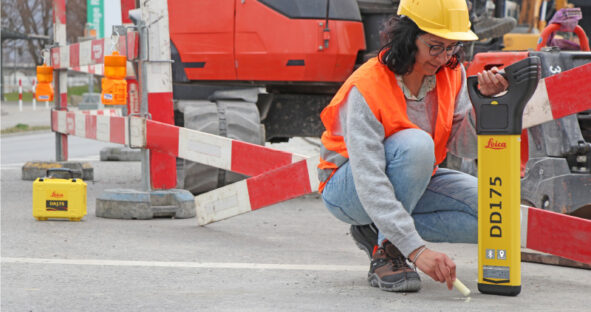 Active Location
Active Location
Up to 60% of buried utilities could be missed when detecting in passive modes alone. Just because they are not detected in a simple sweep, does not mean they are not there and it is safe to excavate.
A signal cable locator and signal transmitter (Leica DD100 Series) will significantly improve the detection process. This small portable unit induces a signal to a cable or pipe, which can be traced by the cable locator. This is called active locating.
Applying an active signal
A majority of buried utilities may not be detected by searching for passive signals using the locator on its own. These hidden utilities may not carry a live current or radiate radio signals, requiring a signal to be induced directly onto the utility to locate them. To detect these additional utilities, an electrical current or signal will need to be applied onto the buried metallic utility, which enables the utility to be traced and identified by the locator.
Induction mode
Induction is a quick and simple way to apply a signal to a utility without the need to make any physical connection. An internal aerial generates a magnetic field into the ground. Any buried metallic utilities routed within close proximity to the signal transmitter will be induced with the signal, allowing the utility to be located and traced with a cable locator.
Connection mode
This is the most efficient way of applying a signal to a utility and should be used whenever possible (especially when taking a depth reading). The output from the signal transmitter can be directly connected to a cable or pipe. A circuit is completed by a connection to an earth stake or ground connection point.
Applying a signal directly to the utility allows the operator to positively identify and trace its path.
Locating the signal
To detect the magnetic fields emitted from a buried utility, the locator uses aerials built up of wire wrapped around ferrite rods. The aerials are used to amplify the small electromagnetic signals emitted by the utility and to provide an input to the locators’ circuitry.
Leica DD100 Series features an enhanced Signal Strength Indicator (SSI), a graphical display detailing the signal strength as a bar graph and a numerical SSI reading. The highest signal reading (peak response) is obtained when the utility is directly below the locator.






